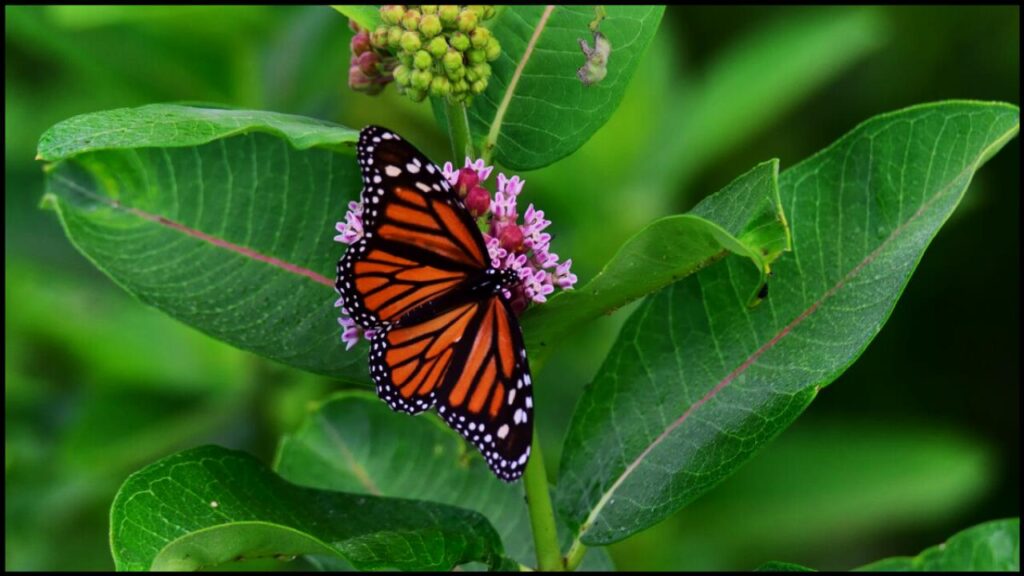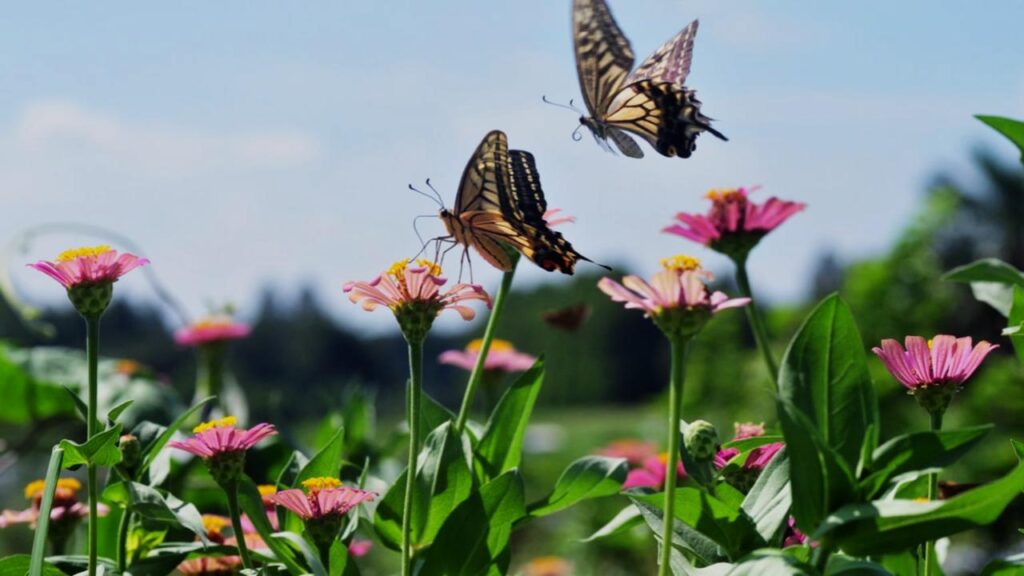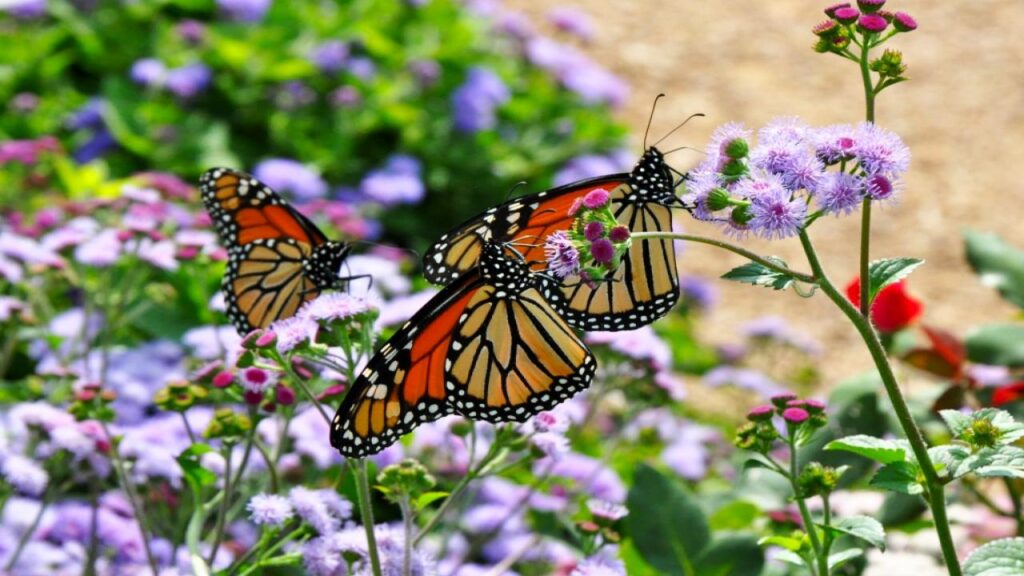So you’ve planted some flowers, maybe even bought a birdbath or two, but where are the butterflies?
If your garden looks great but butterflies are nowhere to be seen, you’re not alone. Many people make the same mistake: they plant what looks good, not what butterflies actually need. The good news? You can turn your yard into a butterfly hotspot with just a few smart moves—and fast. You don’t need a big budget or fancy tools to attract butterflies. Just plant the right flowers, skip the chemicals, let nature do a little of its own thing, and give butterflies the food, shelter, and space they need.

Garden Isn’t Attracting Butterflies: How Butterflies Live? (And Why That Matters)
If you want butterflies in your garden, it’s not enough to just plant flowers—they have a full lifestyle to support. Here’s what they go through:
- Eggs – Laid only on specific “host plants” where caterpillars will feed.
- Caterpillar (larva) – Eats nonstop to grow but only eats host plant leaves.
- Chrysalis (pupa) – Needs a quiet, shady, undisturbed space.
- Adult butterfly – Needs nectar to survive, then lays eggs to start over.
Most people only plant for stage 4. That’s like opening a hotel without beds, food, or a front desk.
5 Common Reasons Butterflies Skip Your Yard

1. You Don’t Have Host Plants
Each butterfly species lays eggs on one or two specific plants. No host plant means no caterpillars and no butterflies.
Example:
- Monarchs need milkweed
- Swallowtails need dill or fennel
- Gulf fritillaries love passionflower
2. Not Enough Nectar Flowers
Adult butterflies live off nectar, so your garden needs flowers that bloom from spring to fall.
3. You’re Using Pesticides
Even organic bug sprays can harm butterflies, especially during their egg and caterpillar stages.
4. Too Much Shade or Wind
Butterflies are cold-blooded. They need sunny, calm spots to warm up and fly.
5. Your Garden’s Too Clean
A perfectly neat yard might look nice but doesn’t offer shelter. Caterpillars need leaves, weeds, and wild corners.
The Fast Fix: Turn Your Garden into a Butterfly Magnet
Step 1: Add Native Plants
Native plants are what local butterflies are used to—they’re low-maintenance and perfect for your area.
| Butterfly | Host Plant |
|---|---|
| Monarch | Milkweed |
| Swallowtail | Dill, fennel, parsley |
| Gulf Fritillary | Passionflower |
| Red Admiral | Nettles |
| Painted Lady | Thistle, mallow |
Step 2: Make Sure You Have Flowers All Season
Plant flowers that bloom at different times so there’s always food.
| Season | Great Flowers |
|---|---|
| Spring | Alyssum, phlox, salvia |
| Summer | Zinnias, lantana, bee balm |
| Fall | Goldenrod, aster, sedum |
Step 3: Set Up a Puddling Station
Butterflies don’t just drink nectar—they need minerals too.
DIY:
- Fill a shallow plate with sand and a little water
- Add a pinch of salt or compost
- Place it in the sun near flowers
Step 4: Leave Some “Mess”
Let part of your yard grow a little wild:
- Skip trimming everything
- Leave a few weeds or tall grasses
- Let leaves stay on the ground in fall
Garden Isn’t Attracting Butterflies: How Your Backyard Can Save Butterflies?

People often say, “If you plant it, they will come”—and that’s especially true for butterflies. Take milkweed, for example. When news broke in the late 1990s about monarch butterflies disappearing, folks across the country started planting milkweed—the monarchs’ go-to plant for laying eggs and feeding hungry caterpillars. And it worked. Eastern monarch populations began to bounce back. Sadly, their Western cousins weren’t so lucky—extreme heat waves and wildfires have wiped out many of their overwintering spots.
Now, a new study published in the journal Science is sounding the alarm for all butterflies, not just monarchs. According to the research, the U.S. lost 22% of its butterflies between 2000 and 2020. Even butterflies we once thought were common are now on the decline.
The study didn’t dig into exact causes, but scientists say climate change, shrinking habitats, and insecticides are likely to blame.
Skip These Butterfly Killers
- Don’t spray your lawn or flowers
- Avoid mosquito foggers
- Don’t mow every inch
- Don’t buy hybrid flowers with no nectar
- Don’t over-prune in fall—chrysalises might be hiding in leaves
Garden Isn’t Attracting Butterflies: How to Turn Your Backyard into a Wildlife Haven?
One of the best ways to support these helpful creatures is by planting flowers they love. When you choose the right plants, your garden becomes a healthy, thriving space where both plants and wildlife can flourish.
Our gardens can be quiet, peaceful places—unless a neighbor fires up their power tools! But even with that, gardens are full of life and activity. Bees, butterflies, birds, and many other insects depend on our gardens for food and shelter.
If you take a moment to just stand in your garden, you might hear the gentle buzz of bees, the flutter of wings, or the soft hum of hummingbirds. All this activity isn’t just lovely to watch—it’s vital for pollination. Pollinators help plants grow by moving pollen around, and they come in all shapes and sizes: bees, butterflies, moths, beetles, flies—even bats! In this post, we’re sharing some of the best perennial flowers to plant if you want to attract bees, butterflies, and hummingbirds.
The great thing about perennials? You only need to plant them once—they’ll come back year after year, bringing color, beauty, and a buffet for pollinators.
What to Plant Based on USDA Zones
| Zone | What to Plant |
|---|---|
| 3–5 (North) | Coneflower, goldenrod, milkweed, aster |
| 6–7 (Midwest/East) | Bee balm, liatris, zinnia, Joe-Pye weed |
| 8–9 (South) | Passionflower, lantana, verbena |
| 10–11 (Florida/California) | Tropical milkweed, salvia, marigold |
Check your zone at USDA Plant Hardiness Map
Month-by-Month Butterfly Garden Checklist
| Month | To-Do |
|---|---|
| March–April | Start seeds, prepare soil, prune gently |
| May–June | Plant host and nectar flowers, set up puddling station |
| July–August | Keep flowers blooming, stop spraying, leave wild corners |
| September–October | Add fall bloomers, stop mowing certain areas |
| November–February | Let leaves stay, avoid digging—chrysalises may be there |
Tips for Different Climates
Dry Climates (Arizona, Nevada, Texas)
- Use drought-tolerant flowers like blanket flower and penstemon
- Add shade with small trees or shrubs
- Keep puddling stations filled daily
Humid Climates (Florida, Georgia, Carolinas)
- Space out plants to avoid mold
- Grow passionflower for Gulf fritillaries
- Use raised beds to keep roots dry
A Beginner’s Journey: Brad’s First Year of Butterfly Gardening
Brad, a beginner gardener from Pennsylvania, started a butterfly garden to help him feel better during a tough time. He planted bright flowers like Mexican sunflowers and morning glories, and added special plants like milkweed for monarchs and dill for swallowtails.
Even though storms damaged some of his plants, Brad didn’t give up. He was thrilled to see butterflies visiting his garden. Watching monarchs and swallowtails fly around made him feel happy and proud.
Brad’s story shows that anyone—even a beginner—can grow a butterfly garden. It’s a fun, peaceful hobby that brings a little magic to your backyard.
